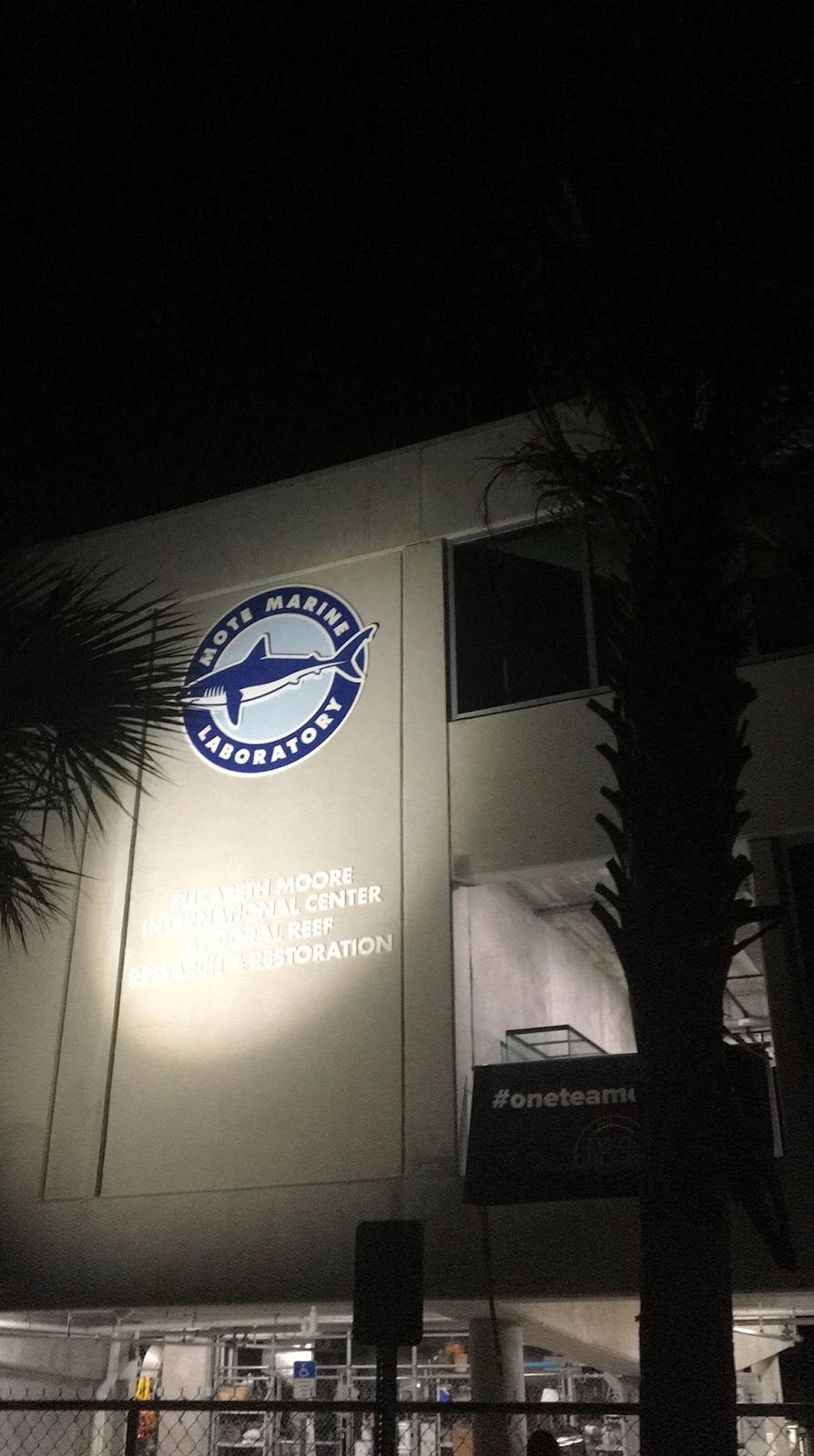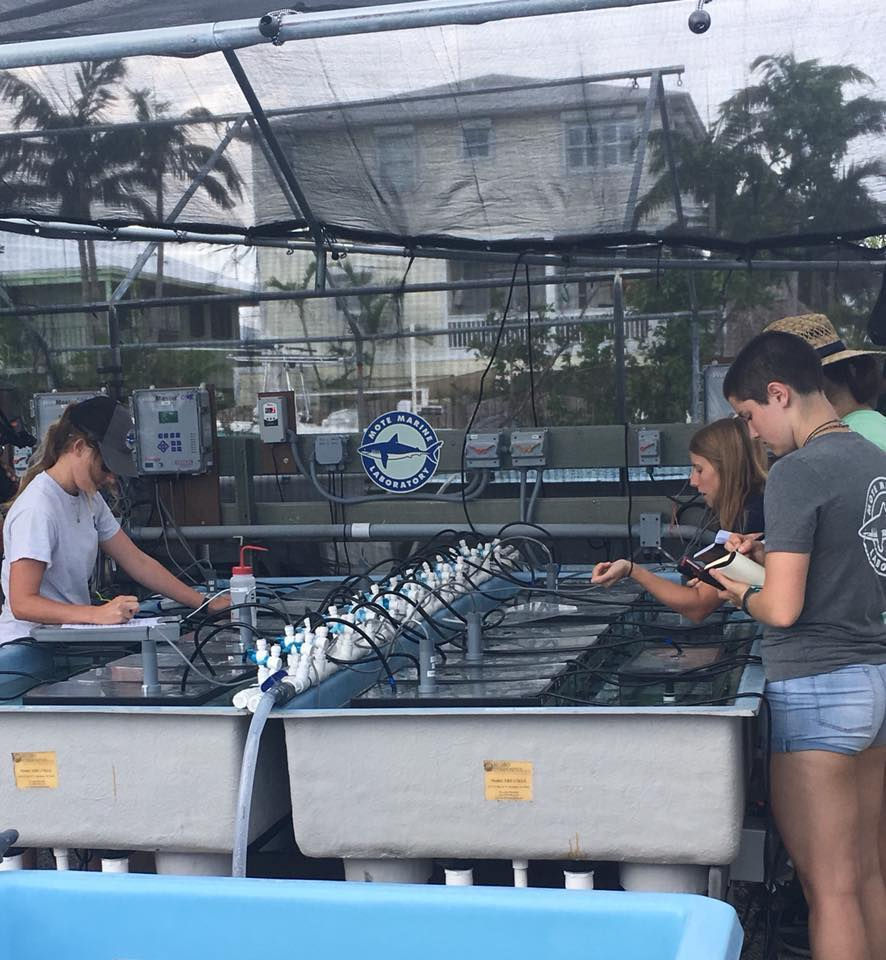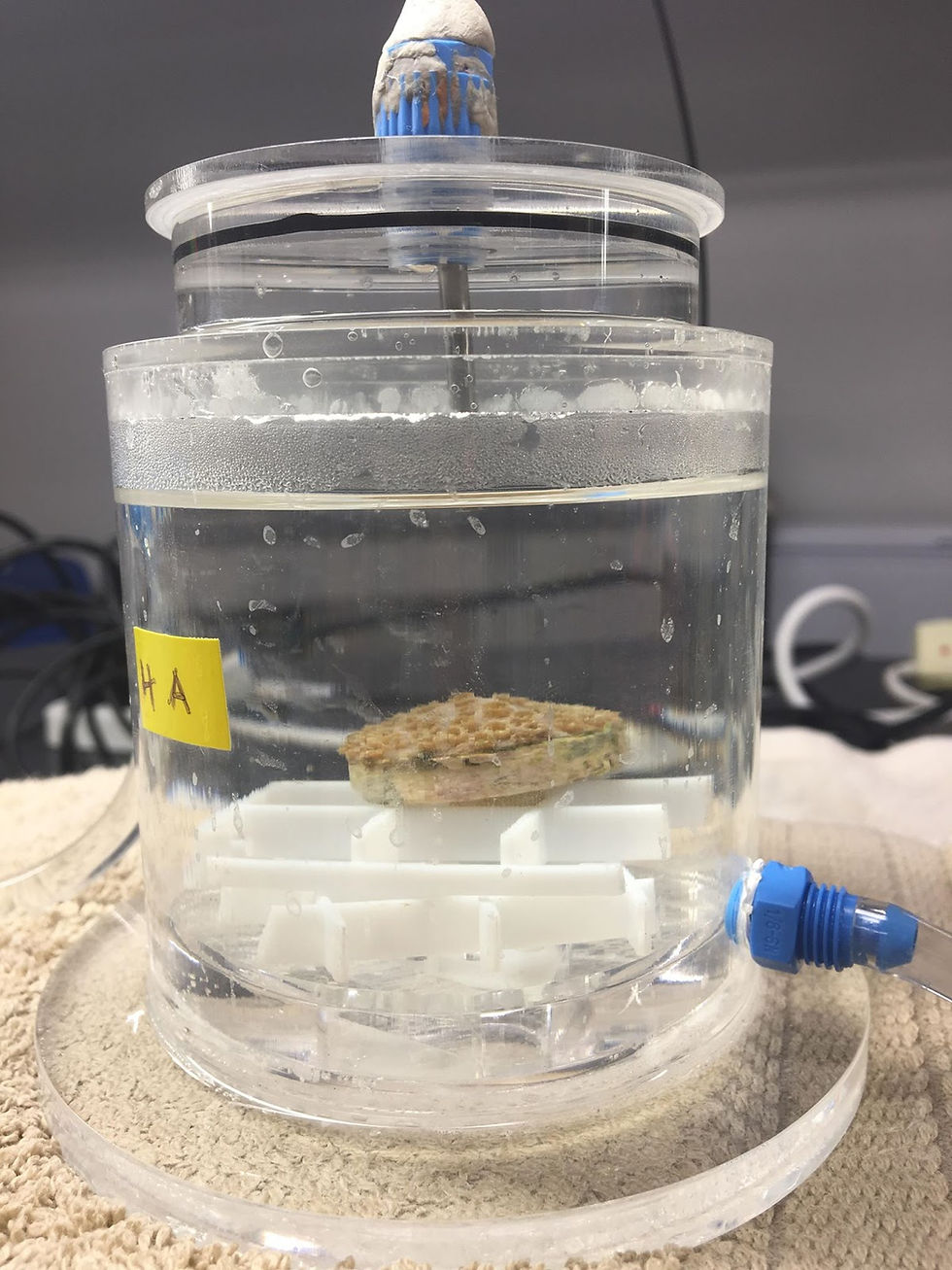MOTE Coral Restoration Research
- keeptheoceaneverblue
- Mar 26, 2019
- 4 min read
By Ellie Jones

I stood at the lab bench and held my breath as I watched the mass decimal numbers on the scale shift up and down, up and down, up and down… finally, the machine stabilized and beeped to let me know it was finished. I let out my breath and scribbled down the number before taking the lid off of the tank, reaching in with a pair of tweezers, and carefully removing the tiny Orbicella faveolata coral growing on a small cement plug.
This little coral was one of thousands being grown at the Elizabeth Moore International Center for Coral Reef Research and Restoration (IC2R3) run by Mote Marine Laboratories in Summerland Key, Florida. IC2R3 is most well-known for their Restoration program, where they grow boulder and branching corals on cement plugs. In order to grow the corals, the restoration team fragments the corals into individual polyps and places them on the plugs. Once they grow large enough, they are transplanted out onto the Florida Keys reefs to begin to regrow damaged areas of the reef.
Last summer, I was an intern for Mote’s Ocean Acidification (OA) program. In the OA program, we took coral plugs from the restoration team and placed them in predicted future ocean conditions. These conditions are taken from the International Panel on Climate Change (IPCC) reports. We ran experiments with the corals in predicted conditions in order to see how different genotypes of the same species will respond. The results would tell the restoration team which corals to plant to make sure they will be able to survive the next decade as ocean conditions continue to change. We used the corals Orbicella faveolata and Pseudodiploria clivosa in our experiments.

Our lab had one of the largest OA experiment systems in the country! Our various raceways, the blue tables in my pictures, could hold twelve tanks each with a different treatment in each tank. This means our lab had a ton of space for fun experiments. For the resilience experiments, we had four different treatments based on two variables: temperature and pH. By combining a normal ocean temperature, a high temperature, a normal ocean pH, and a low pH, we created four different environments to place the coral plugs in. Over the thirteen weeks that I worked at Mote, we spent every day monitoring the water chemistry, every week cleaning and caring for the system, and every month taking measurements of the coral growth and health.
Daily, our routine was pretty much the same. We arrived at the lab at 8:00 am to spend the first part of the day taking measurements of the water quality. Tedious, but important!
In order to publish our results after the experiment was completed, we had to show that our treatment quality was consistent every single day. Our lead chemist, Lindsay Arick, had the system hooked up to her phone so she would get an alarm any time the probes measured a temperature or pH that was off from the normal levels. (Often, I felt like we were taking care of a particularly temperamental toddler rather than an incredibly expensive and advanced piece of ocean science equipment.)

Weekly, we would clean the entire system. To me, this felt like the definition of getting my hands dirty and my feet wet in a marine lab – at the end of cleaning days, we would be covered head to toe in saltwater and algae, but the tanks and the corals would be sparkling clean! Every other week we calibrated the system, making sure that our probes and machines were reading the correct values. Every few weeks, we had to switch the “header” tanks that fed all of the seawater into the system. These were hectic days, running back and forth from tanks to raceways, switching tubes and colored tape, calibrating the new tanks to the system, and making sure it was all running smoothly afterwards. Our lab motto quickly became, “It’s fine, it’s fine, everything’s fine!”…especially when it felt like everything was falling to pieces.
Most importantly, twice throughout the summer we ran measurement experiments on the corals. We used pulse amplitude modulation (PAM) to test the corals’ levels of photosynthesis, a scale to measure the buoyant weight, Image J to measure the surface area and growth, and an oxygen chamber to measure the respiration and calcification of the corals.

I remember getting to the end of each day with sore muscles, covered in sweat and seawater, tired from running back and forth from the upstairs indoor lab to the downstairs outdoor OA system. But at the end of each day, I got to grab a stand-up paddleboard. Directly behind the lab, there was a warm canal facing straight out to the ocean. Stepping onto the board and heading slowly out of the canal, I got to paddle over seagrass beds filled with sponges, small corals, and the occasional sea turtle or tiny blacktip reef shark. It was the perfect way to end a full day in the lab – spending time with the ocean I was dedicating my time to studying and protecting.




Comments